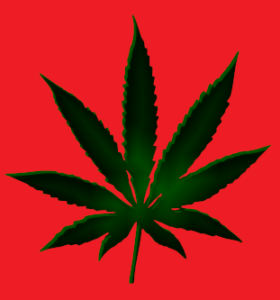
Northern Lights
Overview
Have you ever had the pleasure of experiencing the wonder known as the Northern Lights and its vast array of cascading colors flowing from side to side? If so, then you will have some familiarity with the effects experienced when it comes to the hybrid strain of the same name. The strain Northern Lights is far and beyond one of the most famous strains available. From the name to the earthy tones of the appearance Northern Lights impresses with little flair that does not go unrealized once experienced. A pure 95% indica strain that leaves the user in a whimsical state of uninterrupted euphoria. After the first and second dose of the material the consumer becomes lazily happy and stress free. The effect that Northern Lights produces puts it a step ahead of the rest as it does not overdue the experience. This psychoactive effect produced lets the user relieve themselves from the day and slip into a content state of being that aids in stress related anxieties and socially created ones.
Origin
Though only rumored, Northern Lights was first established near Seattle, Washington having spread during 1985 through Holland. From what is reported, what is now known as Sensi Seeds first cultivated and distributed Northern Lights. Northern Lights captivated consumers with its sweet spicy aroma and its crystalized buds that hide a surprise of purple underneath. Popular itself, Norther Lights is also responsible for other top hybrids such as Shiva, Skunk, and Super Silver Haze. Northern Lights is one of the greats that has solidified itself as a legendary true indica hybrid.
Strain Type
Northern Lights is constructed through the genetics of its parents the Afghani and Thai strains. Northern Lights takes much more from the indica genetics of Afghani rather than the sativa counterpart; making it an indica dominant hybrid. There are apparently multiple strains of Northern Lights ranging from one to nine with nine being the most rare and popular. The differences between the cuts are minute in that they seem to primarily effect the smell and taste rather than the psychoactive elements. The THC potency smoothly averages between 16% and 21% leaving Northern Lights in the medium of present-day strain strength. CBD count is expectedly low at 0.1% as well.

Terpene Profile
The strain Northern Lights consist of a large amount of both Myrcene and Beta-Caryophyllene. Myrcene is present in many strains and is a foundation for other terpenes to develop, while Beta-Caryophyllene has many beneficial components that add an extra layer of complexity to the strain.
Caryophyllene
Caryophyllene is where Northern Lights gets its spicy scent and the additional anxiety relief. This terpene is primarily beneficial in the stability of moods and in treatment of general mood disorders. Uniquely, this terpene, through testing, has been shown to reduce voluntary alcohol intake. Though this has only been shown through the experimentation on rodents, the results show the potential in further research.
Myrcene
The common Myrcene terpene is responsible for any fruit aromas that are present in Northern Lights as well as much of the cerebral effects. With these cerebral elements Myrcene is also a great anti-inflammatory and acts as an effective pain reliever. This terpene, in its abundancy, works with the THC pathways which positively influences cannabinoids to act with more potency.
What Consumers are Saying:
Patients who consume the Northern Lights strain of medicinal marijuana have reported both negative and positive effects when using the product. Some common and some rare.
The Positives
- Happiness
- Sleepy
- Hungry
- Light Pain Relief
- Strong Relaxation
- Euphoric
- Focused

Potential Medical Benefits
Below are a list of conditions that Northern Lights may be helpful in managing. We have selected these conditions based upon two sources: reviews from consumers who report using the strain to manage these symptoms, and/or substantial scientific evidence suggesting that its dominant terpenes may help manage the conditions listed below.
- Anxiety
- Stress
- Nausea
- Mood Disorders
- Headache
- Chronic Pains
- Depression
The Negatives
Some users reported dry mouth, dry eyes, and rarely paranoia, headache, and dizziness.







